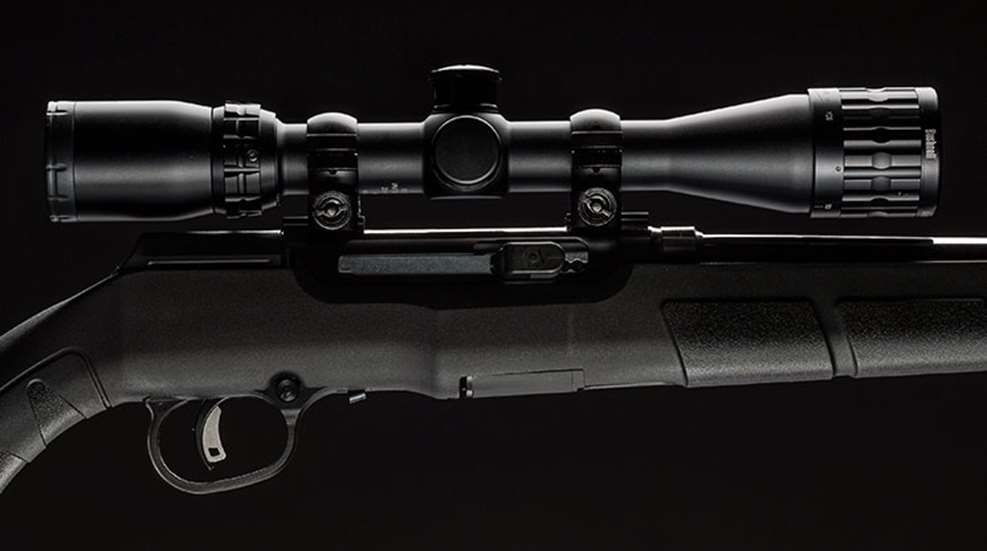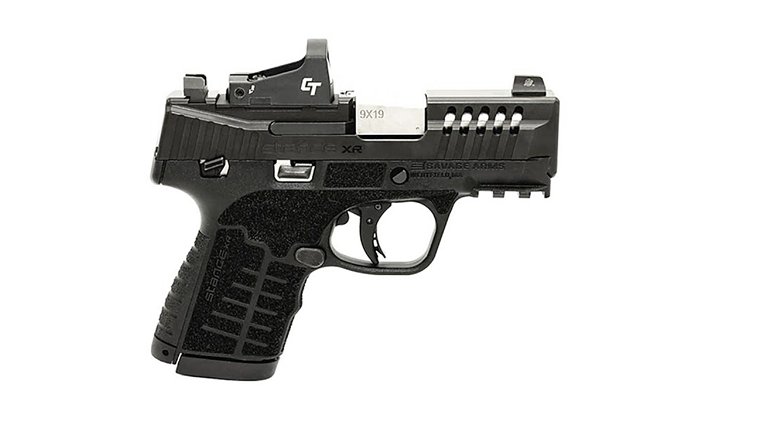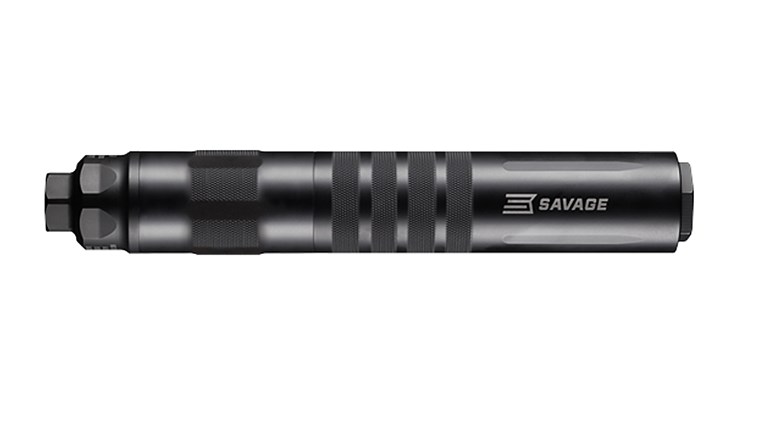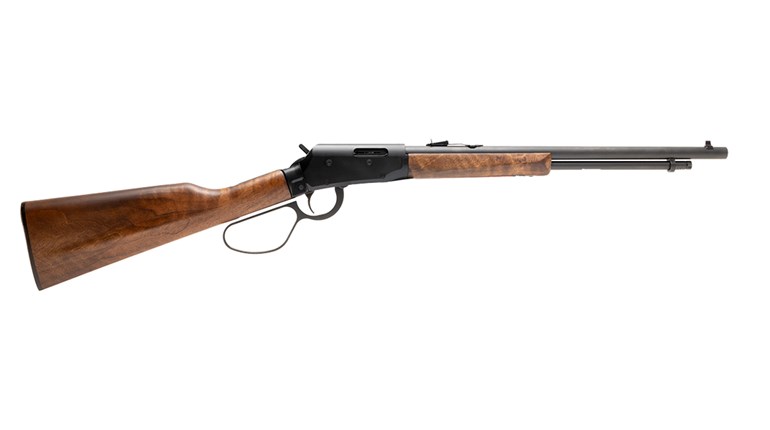
The .17 HMR was introduced in 2002 and proved groundbreaking, as it became the first commercially successful rimfire cartridge in 43 years. Until then its parent case, the .22 WMR, had been the most recent rimfire, and it was introduced in 1959. The only other attempt at a new rimfire cartridge during that period was the 5mm Remington, which lasted only about four years.
With a muzzle velocity surpassing 2500 fps, the .17 HMR was significant as it brought new levels of performance to rimfire rifles. Like all rimfires, it really needed to find a home in a semi-auto rifle. But that proved problematic.
Most semi-auto rimfire rifles use a blowback system to work the action. The weight of the bolt and spring tension hold the action closed long enough for the bullet to exit the bore, and then the pressure produced by the expanding propellant gas pushes back against the bolt to operate the action. Trouble is, the .17 HMR doesn’t play well with that concept. The .22 LR and .22 WMR both have a SAAMI mean average pressure (MAP) of 24,000 psi, while the .17 HMR has a MAP of 26,000 psi. Plus it uses a progressive-burning propellant, which creates a flatter pressure curve and maintains higher pressure for a longer duration. With the straight blowback action used in most rimfires, the bolt opens too quickly for the .17 HMR, when the internal pressure is too high, and the case exits the chamber prematurely and ruptures. With a heavier bolt or stronger spring, the action often fails to cycle.
Attempts at adapting the old action design to this new cartridge resulted in a lot of problems. Most of those who tried failed, and so there is a deficit of affordable semi-auto rifles in .17 HMR—until now.
The new Savage A17 uses a delayed blowback action. A small bar in the top of the bolt slides up to fit into a slot in the receiver when the bolt is closed, locking the action. The bar cams back down upon firing to release the bolt and allow the action to cycle, but it delays the action from opening until pressure has dropped to a manageable level.
To prevent wear from cycling, the receiver is case-hardened and the bolt is hard-chromed. The bolt has what Savage calls “dual controlled-round feed.” The extractor captures the case as it exits the magazine and holds it on the bolt face as with any other controlled-round feeding system. In addition, another stabilizing hook opposite the extractor on the bolt face also helps control the cartridge on its way to the chamber.
Having a polymer shell, the charging handle is big enough to operate with gloves. A lever in front of the trigger guard allows the bolt to be locked open. The cross-bolt safety is above and in front of the trigger. Savage includes its AccuTrigger in the A17. In my gun it broke at 3.5 pounds, and the pull was clean and crisp.
The rotary magazine holds 10 rounds. Each cartridge fits into its own compartment in the rotary internal drum so that no round touches another. This, I suspect, solves a lot of feeding problems with the rimmed cartridges. Pressing a lever on the front of the magazine releases it.
During testing, the magazine presented the most challenges to me. Loading each cartridge seemed tricky until I found the correct angle of insertion. When seating the magazine, I had to lock the back into place first and then the front, or it would pop out when I shot. I am a slow learner and this happened several times before I figured it out.
The 22-inch, carbon-steel barrel has a high-luster black finish. It wears no sights, but the receiver is drilled and tapped for scope bases, which are included. The rifle’s injection-molded stock has a rubber buttpad and sling swivels. I heard some criticism of the molded-in gripping blocks on the fore-end and pistol grip, but I kind of like them. To each his own I suppose.
Two screws hold the stock to the action, but the back screw is unconventionally oriented down rather than up. To separate the barreled action from the stock you must lift off the polymer dust cover from the rear of the receiver, and unless you want to say lots of bad words, you should remove the scope as well. With the barreled action out of the stock and the trigger housing removed, you can pull off the bolt handle and slide the bolt out of the receiver for cleaning.
I remember some years ago asking Ron Coburn, the man who revitalized Savage, why the new guns shot so well. “Button-rifled barrels,” he said. Ron has since retired, but the A17 has a button-rifled barrel and it’s amazingly accurate. I held three-shot groups easily to sub-MOA with several different ammo products. My best 50-yard group measured just .15 inch, and it was with the new A17 ammo CCI designed for this gun.
CCI advertises that the A17 ammo is 100 fps faster than other 17-grain loads. It averaged a blistering 2798 fps from the rifle. The next-fastest 17-grain load, also from CCI, was 2705 fps. While 93 fps is not quite the promised 100 fps, it’s close enough. The A17 ammo was 140 fps faster than the Hornady 17-grain load.
The important thing is I encountered none of the issues that plagued other semi-auto .17 HMR rifles. The Savage A17 runs well, and given its outstanding accuracy, I think it’s going to become a favorite among hunters. Thirteen years after the .17 HMR arrived on the scene, it’s about time.

Technical Specifications:
• Caliber: .17 HMR
• Barrel: 22"; carbon steel; button rifling;6 grooves, 1:9" RH twist
• Magazine: rotary, detachable box; 10-rnd. capacity
• Trigger: single-stage, user-adjustable AccuTrigger; 3.5-lb. pull weight
• Sights: none
• Safety: cross-bolt
• Stock: straight-comb, matte-black synthetic; LOP 13.75"
• Metal Finish: high-gloss black
• Overall Length: 43"
• Weight: 5.41 lbs.
• Accessories: factory-installed scope bases
• MSRP: $465




































